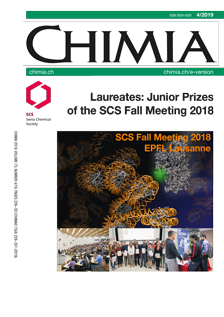Multifunctional Molecular Modulation for Efficient and Stable Hybrid Perovskite Solar Cells
DOI:
https://doi.org/10.2533/chimia.2019.317PMID:
30975264Keywords:
Hybrid perovskites, Molecular engineering, Molecular modulation, Solar cells, Solid-state nmrAbstract
Hybrid organic–inorganic perovskites have become one of the leading thin-film semiconductors for optoelectronics. Their broad application will greatly depend on overcoming the key obstacles associated with poor stability and limited scalability. There has been an ongoing effort to diminish some of these limitations by using organic additives. However, considering the lack of understanding of the underlying structure–property relationships, this progress was greatly based on trial and error as molecular-level design remains challenging. Our approach for enhancing the stability of hybrid perovskites without compromising their efficiency is based on judicious molecular design of multifunctional molecular modulators through fine-tuning of noncovalent interactions and exploiting their structural adaptability. The design principles were scrutinized by solid-state NMR spectroscopy to unravel a new path for stable and scalable perovskite solar cells, which we review in this article.Downloads
Published
2019-04-24
Issue
Section
Scientific Articles
License
Copyright (c) 2019 Swiss Chemical Society

This work is licensed under a Creative Commons Attribution-NonCommercial 4.0 International License.
How to Cite
[1]
J. V. Milić, D. J. Kubicki, L. Emsley, M. Grätzel, Chimia 2019, 73, 317, DOI: 10.2533/chimia.2019.317.







